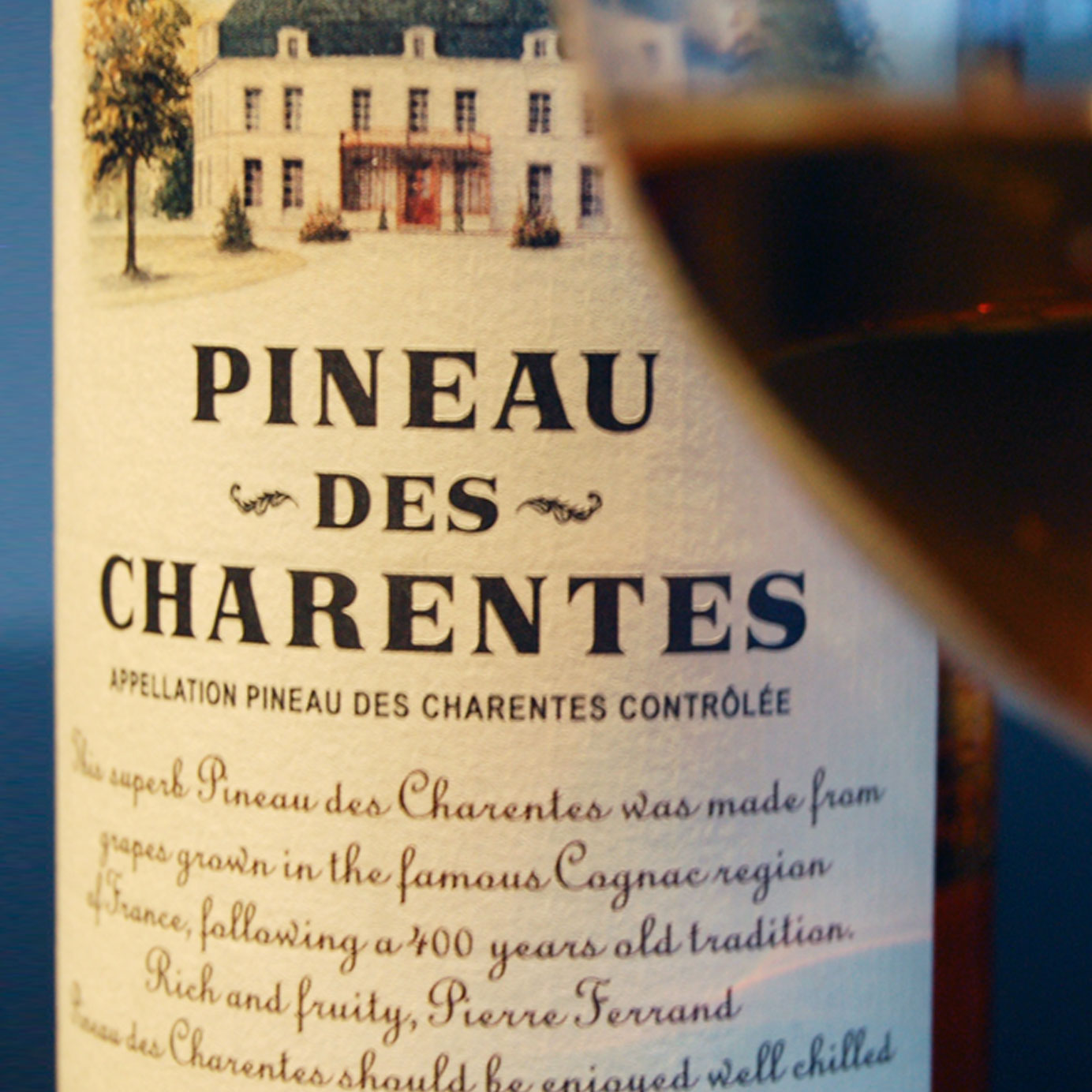It’s totally normal and probably psychologically healthier to shut out the collective drinks marketing noise. “Mango Margaritas are here!” “Rosé all day, bae!” “Coconut Rum — your doctor says it’s the new water!”
But this is one trend too good to keep to ourselves. This is Pineau des Charentes.
The name sounds like something that belongs in a snifter in a library, but in reality this juicy French aperitif is much, much happier poolside, or really anywhere in the vicinity of a nice breeze. It might just make you rethink rosé as your go-to, it’s-hot-outside-and-I-want-to-chill bottle.
Unlike most summer drinks, which tend to be two dimensional, low-alcohol, and easy to knock back without losing count in Corn Hole, Pineau des Charentes is both crushable and compelling. It’s technically neither wine nor booze but a “vin de liqueur,” or a mix of tart grape juice and Cognac. Unlikely partners in crime, for sure, because they met by accident.
As the story goes, a vintner in Charentes, France, accidentally poured some unfermented grape juice into a barrel that still had Cognac in it. (Or vice versa. It was 1589, details are scarce.) Like any reasonable person, the producer hid his mistake, tucking the barrel into a corner. A year or so later, somebody opened the barrel, tasted its contents, and giggled with delight (we assume). Thus, Pineau des Charentes was born.
So why haven’t you heard of it after four centuries of production? There are a couple reasons. Like Armagnac, which the French greedily hoard while widely exporting its cousin, Cognac, Pineau is a hometown favorite. The French and a ton of Belgians, as it happens, really love it. The United States gets some, but not nearly enough for it to get the national marketing spend of, say, Aperol or rosé. (You won’t see canned Pineau des Charentes anytime soon.)
And, unlike widely distributed apertifs like Vermouth or Aperol, Pineau des Charentes is pretty expensive to make. Cognac is a pricey ingredient, even at a roughly three-to-one wine-to-juice ratio.
Thankfully, a few producers sacrifice their profit margins for the sake of our thirst. There are two categories of Pineau des Charentes: White varieties are made mostly with the Ugni Blanc, Colombard, and Folle Blanche, the same grapes used to make Cognac; and red Pineau des Charentes is usually made with Merlot, Cabernet Franc, Cabernet Sauvignon, and Malbec.
Both red and white Pineau must be aged at least 18 months. White varieties spend 12 months in oak and, surprisingly, reds only require 14 months in oak. Wines aged longer than five years are called “vieux” Pineau. After 10-plus years you get “très vieux” Pineau, which translates to the clumsy-sounding “very old” Pineau, and which is anything but clumsy and in fact exquisitely delicious.
All Pineau des Charentes offer remarkably complex flavors. Even with one-year-old Cognac in the background, you get texturally syrupy, nutty notes from barrel aging. Its sweet-tart flavors might remind you of the world’s best glass of lemonade, accented by the sort of dark-light, roots-menthol interplay you’d get in a glass of Fernet.
Cognac gives the drink a slightly higher ABV. It sits in the perfect “summertime happy place” of anywhere between 16 and 22 percent. It’s excellent chilled, but it doesn’t have to be ice-cold to be drinkable.
And there are plenty of elements in Pineau screaming out for food — fruitiness, acidity, nuttiness, sweetness, alcoholic warmth. Win at life with a cheese platter or even oysters for white Pineau, and either chocolate or a charcuterie plate for red. Alternatively, if you’re at Diddy’s yacht party, you’ll obviously be pairing your très vieux Pineau with foie gras.
Four Pineau des Charentes to Try
If you buy a bunch of Pineau des Charentes while buzzed, or just fall in love with the stuff and want to start building your collection, store it upright, away from sunlight.
Pierre Ferrand White Pineau des Charentes
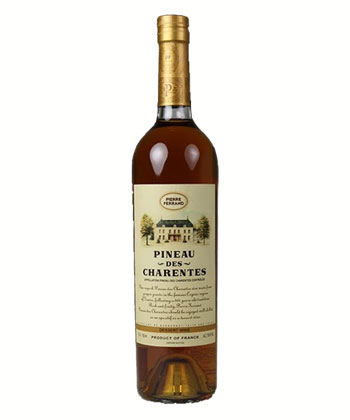
Cognac producers are unsurprisingly making some of the best Pineau des Charentes. Pierre Ferrand’s affordable flagship white Pineau is juicy and bright, with a spritz of acidity over subtle caramel and peach pit. Straight or in a cocktail (we like it topped with Champagne), it’s a great way to start your night.
Navarre Vieux Pineau des Charentes
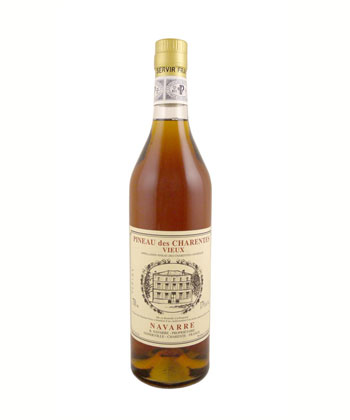
This one’s more expensive, sure, but then again you’re not typically going to get something aged for 30 years for less than $100. This white, vieux (five-year aged) Pineau provides richer notes of dark dried fruit. It’s fragrant and silky with a palate-cleansing, slightly nutty finish.
Maison Prunier Pineau des Charentes Rouge
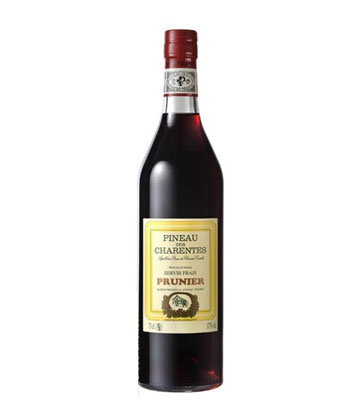
Here’s an affordable foray into young red Pineau, when it still displays more of the berry side of what you’d find in a bottle of red wine — black currant, dark cherry — but all of it still enlivened by fat, juicy freshness. Young red Pineau is tender and fleshy like a younger port and will be ridiculously kind to your palate and general mood if you give it a soft chill.
Paul-Marie et Fils Très Vieux Pineau des Charentes
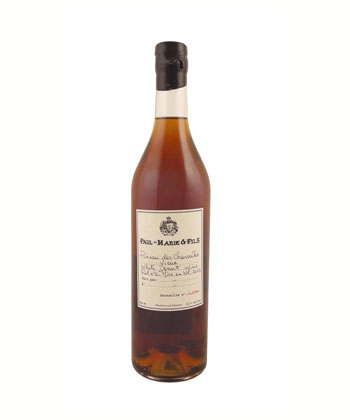 If you have some cash and you’ve fallen in love with Pineau — and you’re not a robot, so you definitely have — this is definitely a bottle worth the splurge. It’s one of the best très vieux out there, supple and fruity with a tinge of drying oak. One sip takes you from caramel and apricot jam to candied citrus and gentle tannin. Buy it, pour it, love it, (maybe) share it.
If you have some cash and you’ve fallen in love with Pineau — and you’re not a robot, so you definitely have — this is definitely a bottle worth the splurge. It’s one of the best très vieux out there, supple and fruity with a tinge of drying oak. One sip takes you from caramel and apricot jam to candied citrus and gentle tannin. Buy it, pour it, love it, (maybe) share it.
